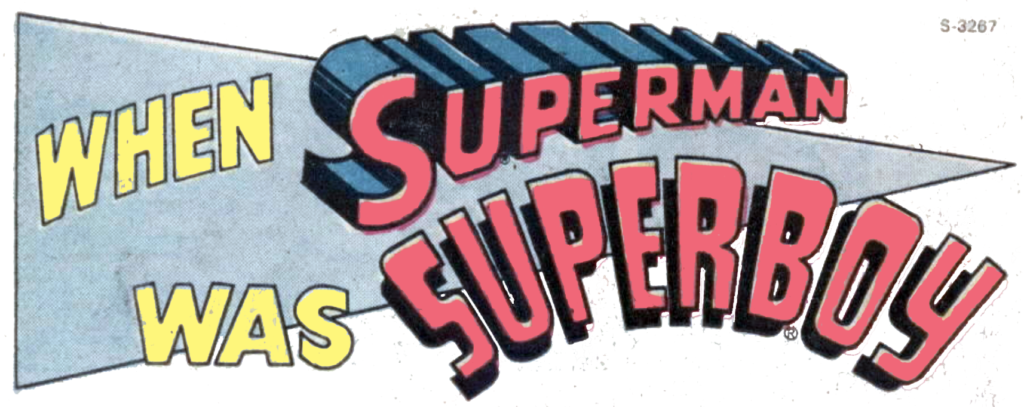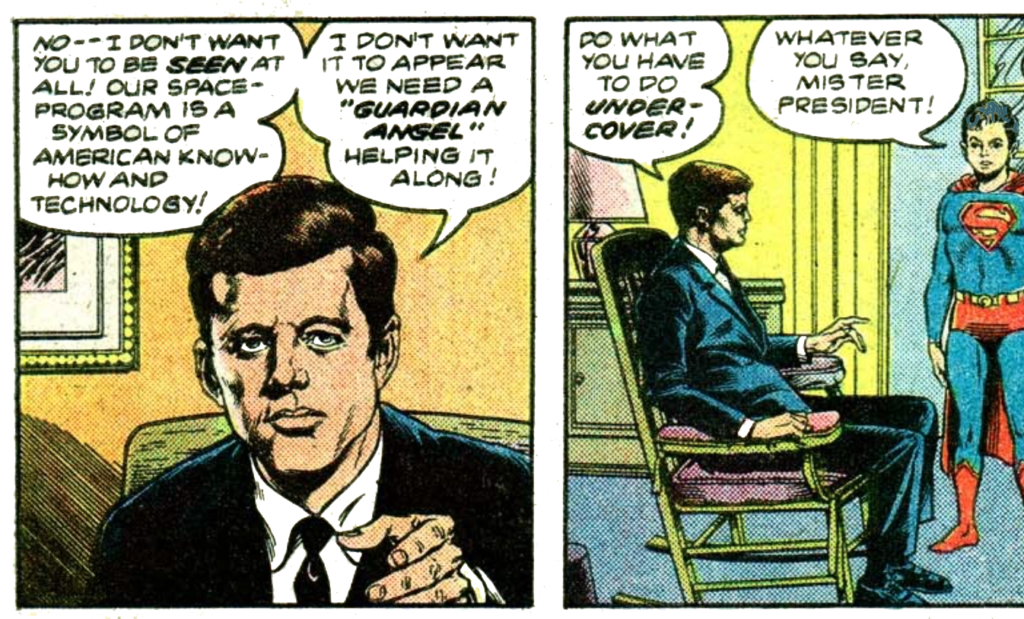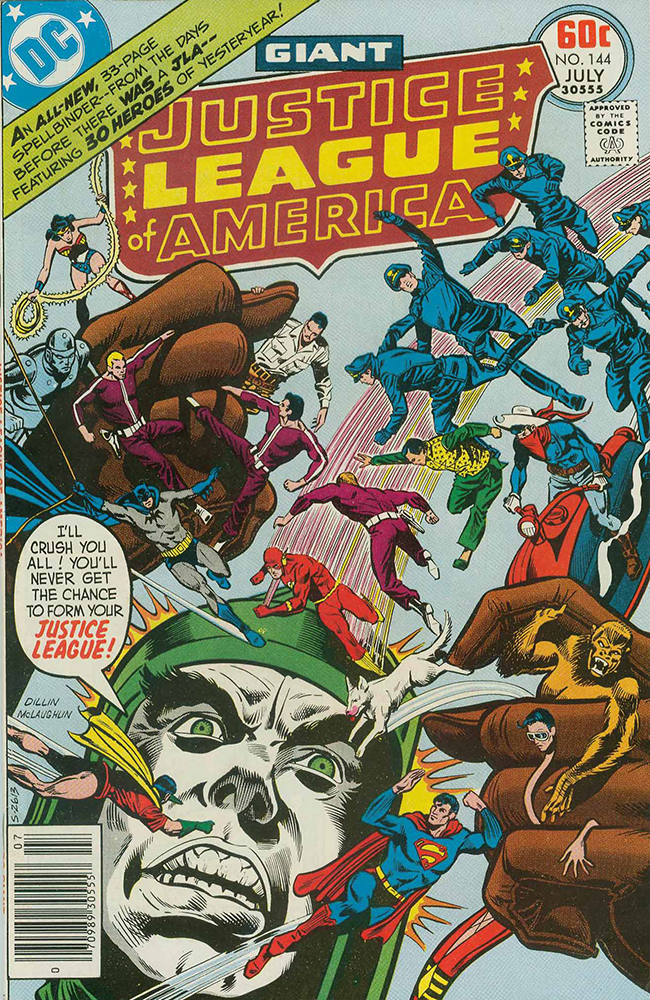Introduction to the Silver/Bronze Age Timeline Part 2: Sliding-Time
_______________________________
Where do we start with the Silver/Bronze Age timeline? We don’t know for certain how much time passes in-between Batman’s debut and the debut of the Justice League of America since that information isn’t specifically given in the comics, but it’s probably two to three years. Since the JLA debut was originally in line with its publishing date of 1960, this meant that Batman debuted around 1957 (and Superman debuted in 1956). But not so fast, kids. Things aren’t so easy in the world of DC. Things done changed thanks to the editorial introduction of sliding-time (i.e. floating timelines). Special thanks and citation to the brilliant Anthony Dean for parts of the information below.
The Silver/Bronze Age operates on a sliding timescale (similar to the sliding timescale later used in the Modern Age). This means that DC editors slid the beginning of the entire DCU timeline to a later date to keep things contemporary and fresh. Nearly all of DC’s use of sliding-time revolved around their franchise player: Superman—specifically, his history of being Superboy for a full decade before becoming Superman.

A special letter about continuity by Cary Bates—in Superboy Vol. 2 #2 (1980)
The first timeline retcon came in 1980 with the debut of Superboy Vol. 2 aka The New Adventures of Superboy #2. Up until that point, all the stories on the Silver/Bronze Age chronology had been operating in real time. Superboy became Superman around 1958-1959 and the JLA formed in 1960. Even 70s issues of Adventure Comics and Superboy noted that Clark’s teenage years were in the 50s. However, by the late 1970s, DC felt that Superman was getting too old (and, by proxy, that all of his peers—including Batman—were getting too old too). Thus, the concept of sliding-time was introduced, although subtly with little fanfare. However, by 1980, the top brass had no choice but to publicly acknowledge it outright, and they did so in a special letter to readership in Superboy Vol. 2 #2 (February 1980). In the letter, writer Cary Bates not only admitted to prior continuity errors, but also stated explicitly that a 16-year-old Clark existed 13-15 years before present day. “Since Superman is constantly moving up year by year, his younger self must do the same. Hence you’ll occasionally see a reference in a Superboy tale to whatever was big some 13 or so years ago. One recent story mentioned The Beatles. […] And 13 or 14 years hence, Superboy will be doing his stuff today!” This meant that in 1965, Clark was 16-years-old, which in turn meant that Superboy didn’t become Superman until roughly 1967 (assuming the Boy of Steel became the Man of Steel at age 18)—which also meant that Batman didn’t debut until around 1967 and that the JLA didn’t debut until 1969-1970!

Superboy Vol. 2 #27 by Cary Bates, Kurt Schaffenberger, Dan Adkins, & Jerry Serpe (1982)
To further hammer in this new status quo, DC published Superboy Vol. 2 #26-27 (February-March 1982). These issues featured SuperBOY assisting President John F Kennedy in 1963, fully-overwriting and replacing a prior issue of Superman where SuperMAN assisted JFK in 1963. This huge retcon made it so that a grade-school aged Superboy was around during the last days of JFK instead of an adult Man of Steel. In these 1982 JFK retcon issues, Superboy appeared to be about 13-years-old, which continued to bolster the canonicity of the new “slid-up-to-the-Sixties-timeline.” Furthermore, a 1984 issue of Superboy Vol. 2 showed Clark in his late teens as of 1969—the date ascertained by a Lana Lang reference to The Carpenters. This further increased the legitimacy of the “slid-up-timeline,” placing Clark at age 19 (turning 20) in 1969.
DC attempted to slide the timeline once more in 1985, but this was literally right as The Crisis on Infinite Earths was beginning, which basically made this final slide null and void. Bob Rozakis, with an Annie Hall reference in Superman: The Secret Years mini-series, attempted to retcon things so that Clark was still in his late teens in 1977! A DC editorial response in the letters column of this series went so far as to state that Superman was around 27-years-old in 1985, meaning that his Superboy time would have been primarily in the 70s! With the company-wide Crisis reboot literally underway before The Secret Years even finished, it is my firm and personal belief that this Secret Years mini should be regarded as non-canon (or at the very least be taken with a grain of salt). While company policy in 1985 would certainly have been to keep on sliding, why slide our already messy timeline forward another decade mere months before a major reboot? Doesn’t make sense. Disregard.
So, with all of that sliding timescale information disseminated, we know that specific date references or topical references in the early years of the Silver/Bronze Age timeline must be ignored. The stories themselves can stay the same, but dates must be altered. For example, let’s first look at how things originally happened in regard to key character debuts and the JLA debut.
Justice League of America #144 places the JLA debut in September 1959, which is the same month Hal Jordan becomes a Green Lantern. Justice League of America #144 explains that the first official mission (from The Brave and the Bold #28) correctly occurs six months after this in March 1960. Justice League of America #71 and Justice League of America #144 also tell us that Martian Manhunter was exiled to Earth in 1955 but took no real action as a superhero, instead staying disguised in “Detective John Jones human form” until September 1959. Justice League of America #144 also reveals that Superman is active and a public figure as of September 1959, meaning his change from Superboy to Superman likely happens sometime in early or mid 1959. Likewise, all of this means that Batman and Robin likely debut in early 1959 as well.

Justice League of America #144 by Steve Englehart, Dick Dillin, Frank McLaughlin, & Anthony Tollin (1977)
Now, let’s apply our sliding timescale to the scenario above and we will get our “official” telling of things. As you will see, every date is simply moved around ten years later.[1] Justice League of America #144 debuts the JLA in September 1969, which is the same month Hal Jordan becomes a Green Lantern. Justice League of America #144 explains that the first official mission (from The Brave and the Bold #28) occurs six months later in March 1970. Justice League of America #71 and Justice League of America #144 also tell us that Martian Manhunter was exiled to Earth in 1965 but took no real action as a superhero, instead staying disguised as “John Jones” until September 1969. Flash’s October 1956 debut actually gets slid about ten-and-a-half years to the middle of 1967. Essentially, Justice League of America #144 tells us that virtually all of the major DC superheroes debut sometime around 1967-1969. Be aware that not all characters have specific dates attributed to their Silver Age debuts. Justice League of America #144 also reveals that Superman is active as of September 1969, but we should still take this to mean that his change from Superboy to Superman happens sometime in early 1967 (to allow for Batman’s first three years of and a bunch of Golden Age-slid stories).
Speaking of these Golden Age-slid stories, there are well over a hundred-and-fifty items that get sandwiched into Batman’s early period—stuff that has been moved from the Golden Age to the Silver Age due to various retcons. So, in order to accommodate all of it, we’ve added an extra two years—i.e. starting in 1967 instead of 1969. (Some other timelines, notably the 5 Earths Project, list Batman’s Silver Age start in 1970 instead of 1969. This is definitely possible if you follow the same logic that puts his debut in 1969, but also only if we again ignore essential Golden Age-slid stories and retcon references—stories and references that I have chosen to include in my two year, or in this case three year, buffer.) Now that we’ve properly explained how Batman starts in 1967, we can take a look at what got him to the point where he decided to put on a bat costume.
_______________________________
_______________________________________________________________________________________
_______________________________
<<< Introduction Part 1 <<< | >>> Silver Early Years >>>
- [1]COLLIN COLSHER: Since the sliding timescale moves everything to a start date of roughly ten years later, one can naturally assume that everything on the Silver/Bronze Age chronology simply gets ten years added onto it. However, as with the Modern Age, that wouldn’t work correctly if done that way. The word “roughly” is essential here. For example, by the 1980s things have to “catch up” with real time. Thus, things are compressed, roughly two publishing years equalling a single in-story year, up until about 1983, where things evolve into a real-time calendar where a January 1983 publication equals a January 1983 in-story narrative date. Because of the nature of this type of time compression throughout the Silver/Bronze Age, items will generally get bumped forward (via the sliding timescale) in a range of eight to ten years. Sometimes, at earlier points on the timeline, items will actually get bumped a little more than ten years, but usually by no more than an extra few months.↩


